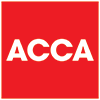Landlords still facing uncertainty…
Landlords with income in excess of £10,000 per year are included in the new requirement by HMRC for digital reports, under MTD ITSA (Making Tax Digital for Income Tax Self Assessment).
HMRC have issued guidance around the subject, but there are still questions that remain unanswered.
Husband and Wife Ownership
There is currently no definite answer as to whether it will be possible to have a joint digital record.
When asked how such ownership could be reported recently, HMRC gave the following response ‘In practice, we expect that it will be possible for these customers to maintain joint digital records and meet other MTD obligations through their shared software. We are working with external partners on this issue and will set out further guidance on MTD requirements for joint property owners in the coming months.’
Jointly held property
This is a very common situation, particularly within families, but HMRC has no way to deal with varying percentage ownerships of properties in a family portfolio.
There is similarly no current way to deal with properties owned by more than one person, where the different owners use different accountants or bookkeepers.
When questioned how this would be dealt with, HMRC responded ‘Currently only one agent can access a customer’s MTD account. We are working with developers and stakeholders to understand the user need for multiple agent access to the MTD system.’
Cash or Accruals?
If a landlord receives income from property of less than £150,000 per year, the default basis for drawing up their property accounts is using the cash basis. If income exceeds the £150,000, the cash basis cannot be used.
HMRC has been unable to explain how a landlord will be able to declare their intention at the beginning of a year, when they may not know at that stage what the total of their income will be.
Furnished Holiday Lets
There is a similar ‘crystal ball’ requirement around whether a property will qualify as a furnished holiday let in the year. This requires a property to be let for at least 105 days and to have been available for letting for at least 210 days in the same year.
HMRC has been asked what will happen if these criteria are expected to be met, but then are not. It responded ‘If a customer later finds that they do not meet certain requirements, for example, a property failing to qualify as an FHL, then they will be able to adjust their digital records accordingly by removing disallowable expenses etc.’
Adjusting submitted records retrospectively would just be another level of administration for all concerned so we hope there is a simple process in place before we go live!
National Insurance Numbers
Both a National Insurance (NI) number and a UTR (Unique Taxpayer Reference) are required to register for MTD ITSA, but not all landlords have an NI Number. As yet, HMRC don’t have an answer to the issue, but assure us that ‘further details will be set out in due course.’
These are just some of the current questions that arise from the guidance around MTD ITSA. As more clarification is issued, we will of course keep you up to date, but if you’re concerned about how the new rules will affect you, please get in touch.
Business News
We send regular updates that keep clients aware of changes and suggestions on a wide range of subjects; if you’d like to receive those too, just add your details below and we’ll do the rest! We promise not to bombard you and you can unsubscribe at any time.


